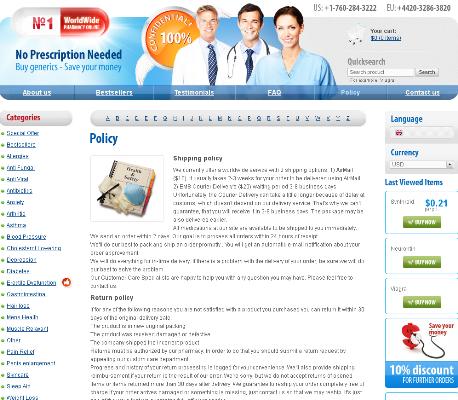Fluoxetione: Dosage and method of application
Fluoxetine is intended for the peroral administration during the meals in the first part of the day. As a rule 1 or 2 daily intakes are recommended. The initial dose and the maintenance dose recommended are 20 mg a day. The maximum daily dose is 80 mg, in aged patients it is 60 mg. The Fluoxetine treatment takes 3-4 weeks, in case of obsessive compulsive disorder - 5 weeks and more. In case of bulimia 1 week of Fluoxetine therapy is recommended.
Contraindications: Fluoxetine cannot be recommended for the intake to the persons with hypersensitivity to the drug. It is not prescribed to the patients who followed MAO inhibitors treatment during two previous weeks before they decided to start the Fluoxetine therapy. It shouldn`t also be prescribed to the patients with liver or kidney failures, to the patients with the epilepsy and convulsive states, to the suicidal patients. Fluoxetine is not prescribed to the patients with diabetes mellitus, bladder atony, angle-closure glaucoma or prostatauxe. It is not recommended for the intake to the pregnant women or women patients in their lactation period. buy Cymbalta online https://www.mabvi.org/wp-content/languages/new/ no prescription In case of patients-children or patients with myocardial infarction or cirrhosis the drug should be administered with great care.
buy desyrel online https://www.mabvi.org/wp-content/languages/new/desyrel.html no prescriptionSide effects : While following Fluoxetine treatment some side effects related to the nervous system and sensory organs, cardiovascular system and blood formation system, gastrointestinal tract, metabolism, urogenital system and skin reactions are possible. Among the side effects of Fluoxetine intake, observed in the nervous system and sensory organs, there are headache, dizziness, anxiety, nervousness, weakness, fatigue, sleep disorders (insomnia, somnolence), restlessness, convulsive status, noise and pain in the ears are possible. As for the Fluoxetine effect on the cardiovascular and blood formation systems, here tachy-or bradycardia, hyper-or hypotension, congestive heart failure, anemia or lymphocytosis can be observed. The side effects of the Fluoxetine on the gastrointestinal tract comprise the drop (or rarely increase) of appetite, anorexia, dry mouth or increased salivation. As for the metabolism, while following Fluoxetine treatment the ADH secretion failure, hyponatremia, hypocalcemia, hypo- or hyperkalemia are possible. The side effects on the urogenital system include frequent urination, urinary tract infections, cystitis, renal failure, painful menstruations or libido decrease. As for the skin reactions to the Fluoxetine intake, here the polymorphous rash, acne, alopecia or contact dermatitis are observed in some cases.
Precautionary measures: In aged patients or patients with cardiovascular diseases, liver or kindney failures Fluoxetine must be administered with great care. In case of suicidal patients the drug administration must be realised under the careful medical supervision. In case of patients with the low body weight the anorectics properties of Fluoxetine must be taken into the consideration. In patients who are vehicle drivers or whose professional and other activities need high concentration and fast psychomotor reactions the Fluoxetine must be administered with great care. While following the Fluoxetine treatment alcohol drinking should be avoided by the patients. buy strattera online https://www.mabvi.org/wp-content/languages/new/strattera.html no prescription As Fluoxetine is the effective and powerful antidepressant drug, having the wide range of side effects and contraindications, it should not be in any case taking without doctor`s prescription.

